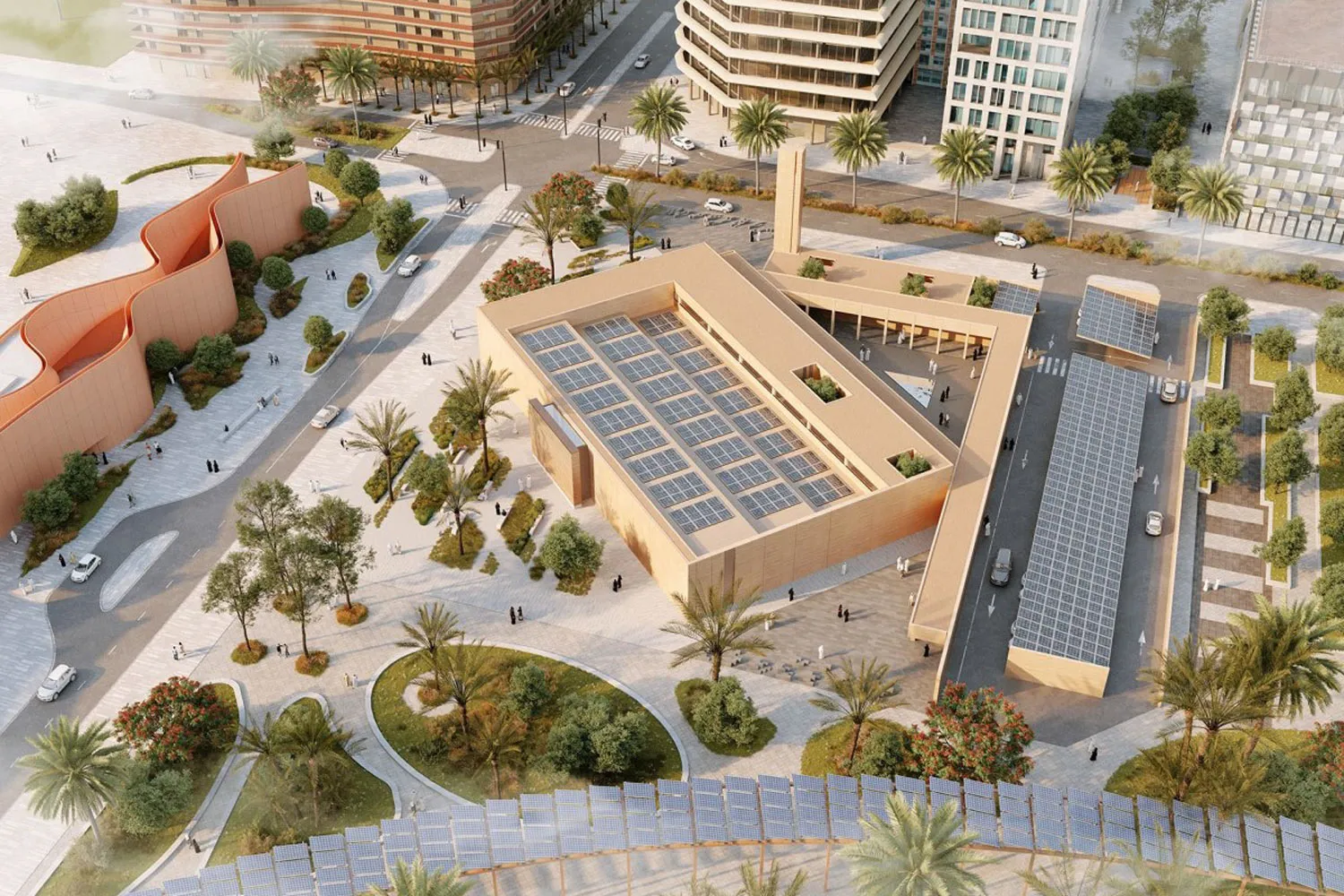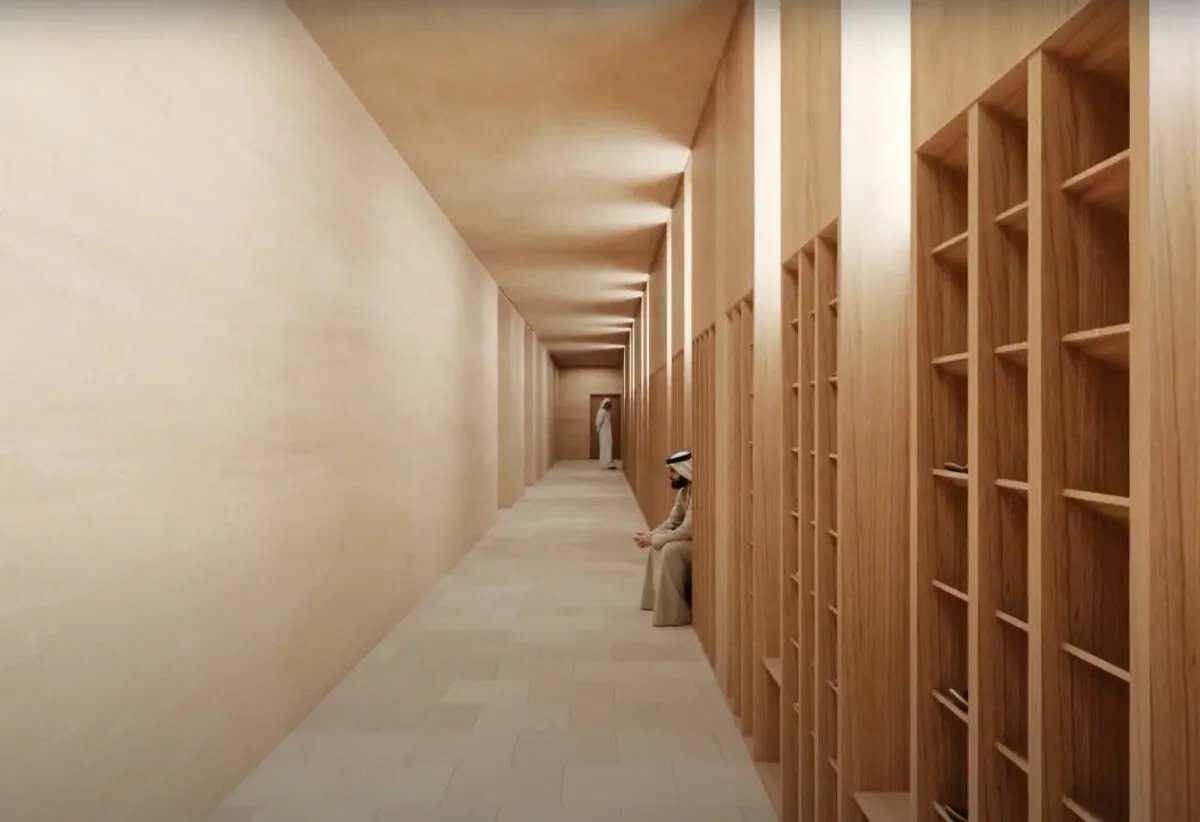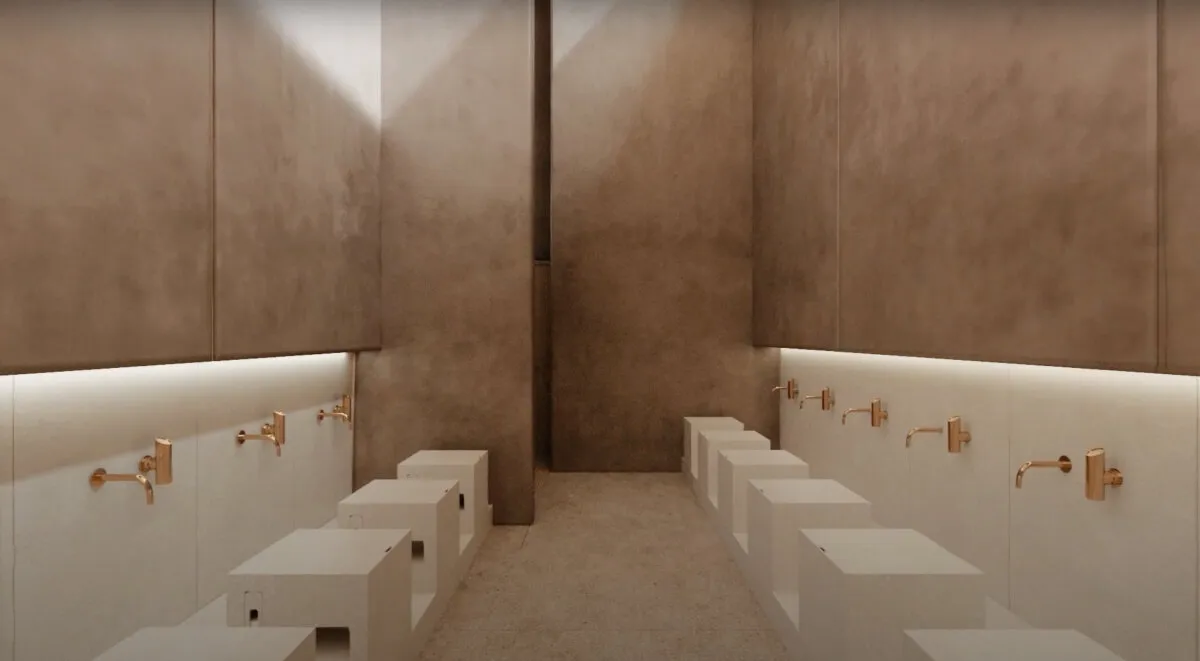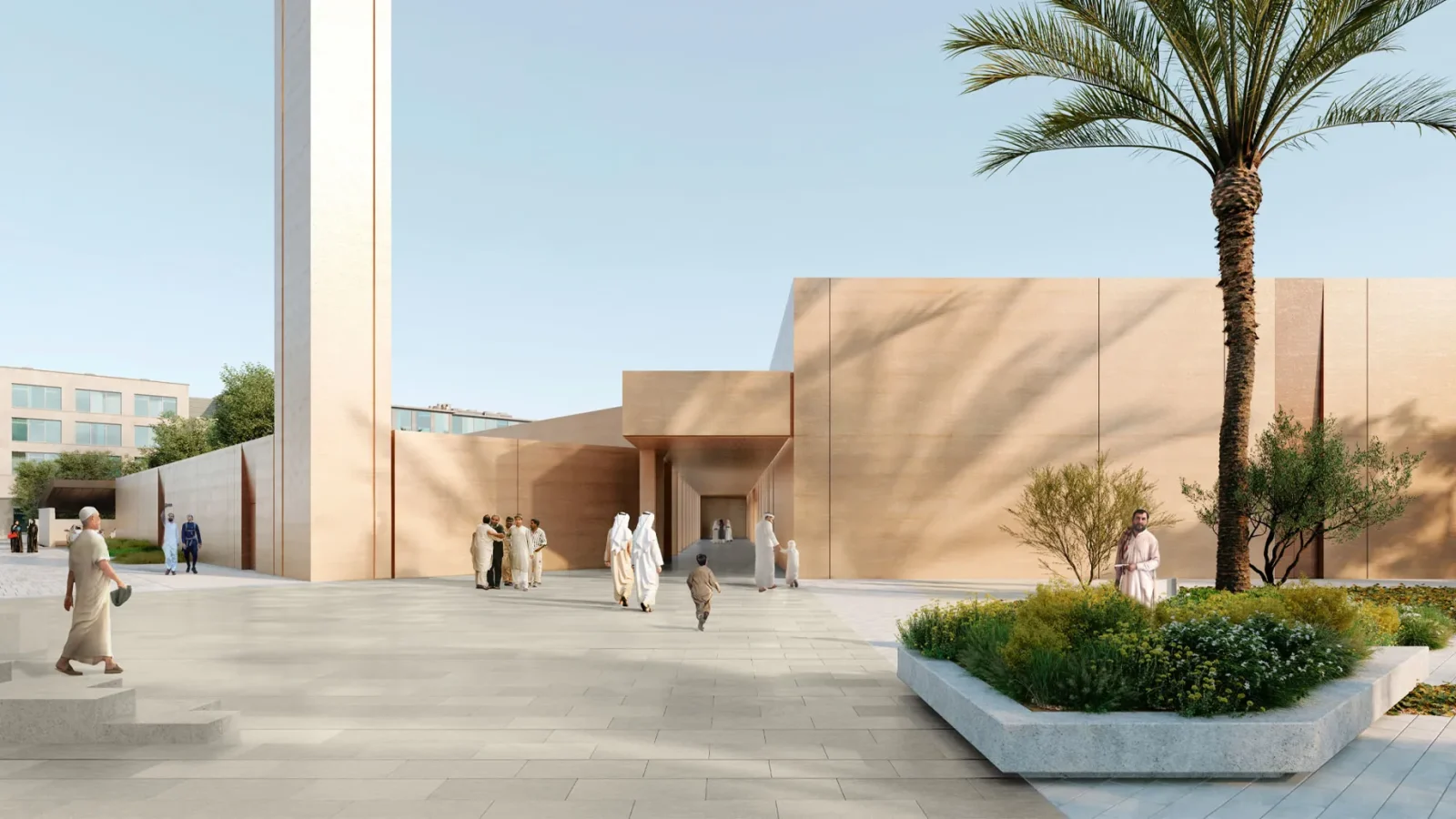The expert in sustainable design, Arup, a renowned firm, crafted a city mosque that connects tradition and modernity with intricate details in the heart of Masdar City, Abu Dhabi. With innovative techniques and traditional wisdom, the Masdar City mosque becomes the world’s first net-zero energy mosque. Merging modern sustainability and cultural significance, the design deeply respects our planet and humanity.

The world’s first net-zero energy mosque

With a human-centric design approach and echoing the ancient rammed earth building construction techniques, the mosque accommodates 1,300 worshippers. With a thoughtful gesture of sustainability, the primary building material was rammed earth that whispers the stories of early Islamic structures. Masdar’s commitment to eco-friendly construction enhances the aesthetic and visual characteristics of the mosque with the implementation of a unique tiered window system that facilitates natural ventilation and lighting.
Building with Rammed Earth

The choice of rammed earth as a building material provides thermal mass to keep the interior naturally cool and reduce the artificial use of air conditioning. The thick, earthen walls made from local soil serve as a powerful metaphor for the earth’s embrace, providing shelter and solace without demanding excessive energy. Entering inside, the space invites one to discover the path of truth, designed with optimal circulation, and interiors seize the light and air, creating an ever-evolving atmosphere of peace. Interiors include sustainable prayer carpets and an energy-efficient lighting system, influencing the mosque’s environmental impact.
Passive cooling system

The silent breathing element of the design was the sun across the desert sky, where 1,590 square meters of photovoltaic panels are installed on the mosque’s exterior, converting sunlight into the very energy that powers this sacred space. Maintaining aesthetic integrity, the Arup designers strategically placed panels that maximizes energy generation. This thoughtful, modern approach blends spirituality and technology, balancing the principles of design to create its purest and true form.
Sustainable environmental design
With sustainable environmental design, the passive ventilation strategy becomes the hallmark, resulting in a 35% reduction in energy consumption compared to conventional structures. The natural illumination is the key element of design, hanging with the hour, allowing the building to breathe with the rhythm of its environment.

The project developed by Aldar integrates hydrogen-based steel, collaborated with EMSTEEL, passive cooling systems, and sustainable rammed earth construction to achieve a net-zero profile with LEED Zero Carbon certification. Its circular form spanning a 1,595-square-meter footprint reduces internal water consumption by 55%, using 100% of its recycled water to irrigate its outside gardens. Setting a new standard for sustainable religious architecture, the Masdar City mosque aims to blend Islamic culture with modern advanced technology.
Masdar City mosque Project Details
Project name: Masdar City Mosque
Architect: Arup
Developer: Aldar
Location: Abu Dhabi, UAE


















Leave a comment